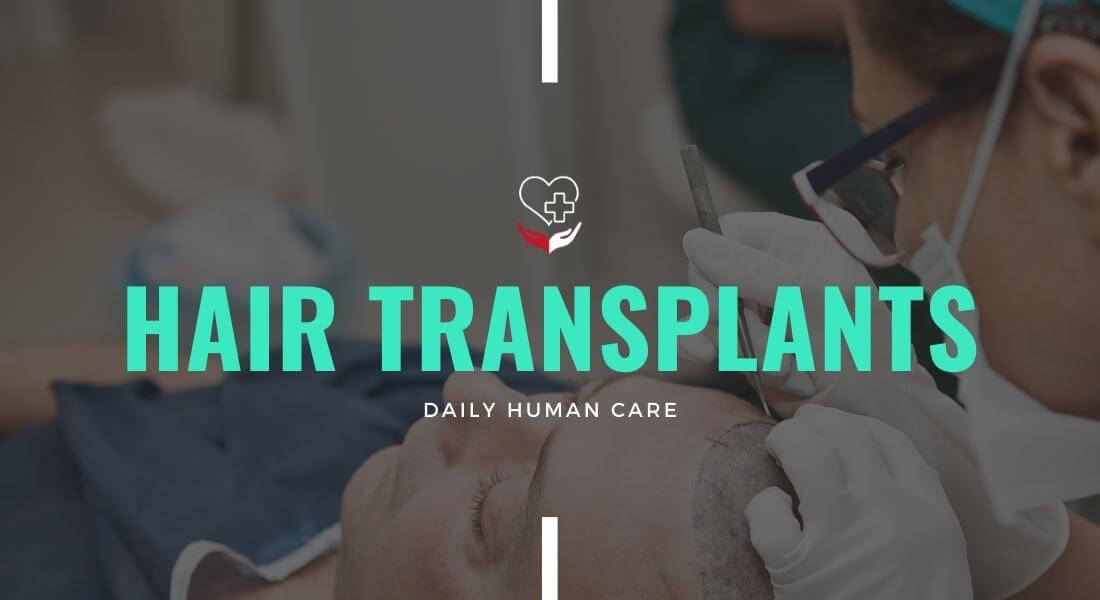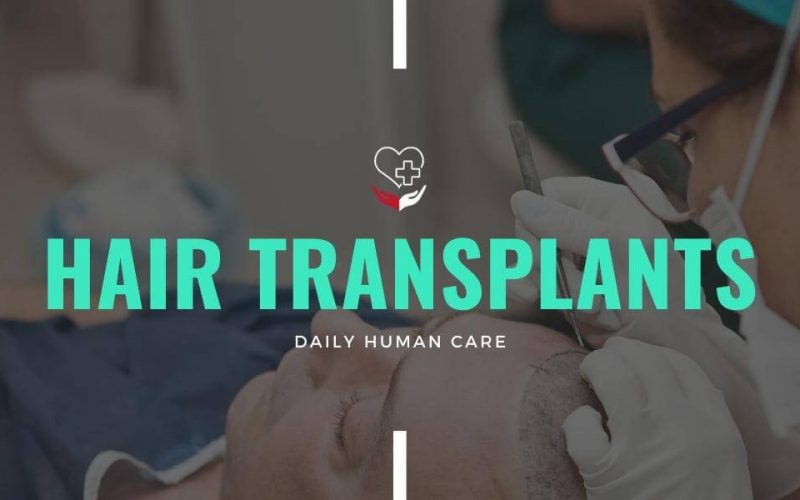This article by daily human care is all about Hair transplants. Hope this will be helpful for you. Enjoy!
Table of Contents
What is Hair Transplant?
A hair replacement system involves adding more hair to an area of your head that may be balding or thinning. The procedure involves taking hair from thicker parts of the scalp or other parts of the body and grafting it onto bald or thinning parts of the scalp.
Around 60 percent of men and 50 percent of women worldwide suffer from hair loss. Over-the-counter products are often used to address this issue, including topical treatments like minoxidil (Rogaine).
Another way of restoring your hair is through a transplant. Transplants with single scalp hairs were first performed in Japan in 1939. Physicians developed the “plug” technique in the following decades. During this procedure, large sections of hair are transplanted.
As time passed, surgeons began using minigrafts and micrografts to minimize the appearance of transplanted hair on the scalp.
Is transplantation effective?
The success rate of hair restoration products over-the-counter is typically lower than that of hair transplants. There are, however, a few factors to take into account:
- The majority of transplanted hair grows back in three to four months, ranging from 10 to 80 percent.
- Transplanted hair thins over time, just as regular hair does.
- Some people with dormant hair follicles (sacs that usually contain hair beneath the skin but no longer grow hair) may have a less successful transplant, but a study published in 2016 suggests that plasma therapy may help transplanted hairs fully regrow in up to 75 percent of cases.
Not everyone is a good candidate for hair transplants. In most cases, they’re primarily used to restore hair if you’re losing it due to an injury or balding naturally.
Since most hair transplants use your own hair, they aren’t as effective for treating people with:
- Balding and thinning on a large scale
- Chemotherapy and other medications can lead to hair loss
- Injuries to the scalp left thick scars
How much does a hair transplant cost?
About $4,000 to $15,000 can be spent on a hair transplant. Costs may vary depending on:
- Procedures involved in transplantation
- Surgeons in your area who are available
- Surgical experience
- Surgical technique selected
Health insurance will not cover hair transplants because they are cosmetic procedures.
What is the procedure for hair transplantation?
Hair replacement systems involves moving hair you already have to an area where you don’t have any. You can also take it from another part of your body. Normally, it is taken from the back of your head.
A local anesthetic numbs the area where the hair will be removed before your surgeon begins the transplant. If you wish to stay asleep during the procedure, you can request sedation.

Rebuilding
A FUT or FUE procedure may take several hours or several days. This will depend in part on how much work the surgeon performs. After the operation, you will be able to go home the same day.
The surgeon carefully removes any bandages after the surgery. Triamcinolone might be injected into the area to keep the swelling down if the area is swollen.
The area where the hair was removed will also likely feel sore or painful after the transplant. The following may be prescribed for the next few days:
- Medications to relieve pain, such as ibuprofen (Advil)
- Antibiotics prevent infections
- A steroid or anti-inflammatories can be taken for swelling relief
- Finasteride (Propecia) and minoxidil (Rogaine) are medications that promote hair growth
Following hair transplant surgery, these tips will help you maintain your new hair:
- After the surgery, do not wash your hair for a couple of days. Use a mild shampoo during the first week after surgery.
- Generally, you can return to work or normal activities after 3 to 4 days.
- During the first three weeks after grafting, don’t use a brush or comb on the new growth.
- Wait until your doctor says it’s okay to wear hats, pullover shirts, and jackets.
- Take a week off from exercising.
If you lose some hair, don’t worry about it. Losing hair is part of the process. After transplanting hair, it may take a few months for it to grow or blend seamlessly with the hair around it.
Also Read : What is Speech Therapy and What happens In Adult Speech Therapy





